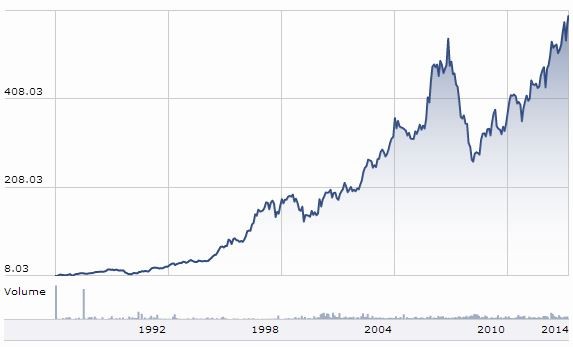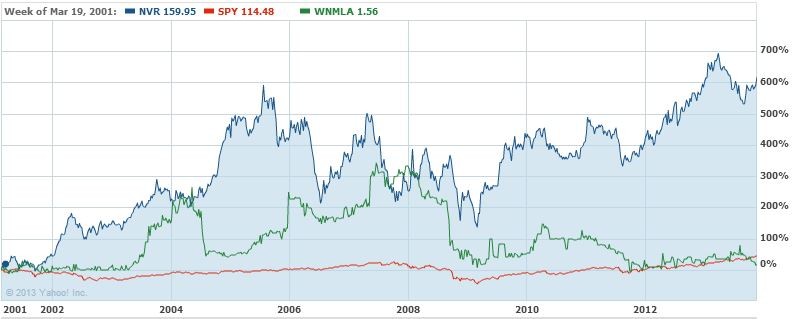Importance of ROIC Part 1 Compounders and Cheap Stocks
Post on: 14 Май, 2015 No Comment

A while back, I posted a couple articles on return on invested capital (ROIC) along with some comments on Joel Greenblatt’s Magic Formula. These posts attracted a lot of comments and email questions, and so I wanted to post some more thoughts on the topic of compounding generally, and maybe ROIC more specifically. Here are some links to posts that are somewhat related to this topic:
In this post I want to address a comment that has been made by numerous people regarding Compounders vs. Cheap Stocks and how some people have a tendency to completely fall into one camp at the expense of the other. The next post I’ll list some examples of why ROIC is crucial for long term business owners and shareholders. I’ll also have a post or two discussing the simple math involved with returns on capital and how that relates to compounding.
Valuation vs. Return on CapitalDepends on Time Horizon
First off, one commenter pointed out that various studies have shown that ROIC is a metric that doesn’t actually add much value to returns. In fact, these studies say that better results could be had by simply just buying cheap stocks (low P/E, low EV/EBIT, low P/B, etc…). Forget the quality (return on capital), just focus on valuation (low price to earnings).
I believe this to be trueBUT, with a very important caveat. One very crucial point is often left out of these studies…. Holding period. Most of these studies pick a group of stocks based on some value measure (low P/E, etc…) and then after 1 year (or sometimes 2 years), sell those stocks and replace them with a new set of stocks that match that valuation criteria. Most of the studies turn their portfolios over once a year.
And I think many value investors see these studies and get excited about valuation, leaving quality far behind. Who needs quality when valuation is all that matters?
Here’s my take: I completely agree with these studies and with the practitioners who favor valuation over quality if their holding period is only 1-2 years. On balance, paying a high price for even a great business will not always work out well if you have to sell that business in 1-2 years, or even 3-5 years. But if you plan to hold your stocks for longer periods of time… 5 years, 10 years, or longer, then quality becomes much, much more important than valuation.
Why Does Wells Fargo Beat Everyone Else?
I did a post on Wells Fargo a few months ago where I discussed how WFC’s long term business results trounced all of the small community banks’ long term results, and the WFC stock price had the same outperformance. WFC’s high return on equity (15%+ over long periods of time) was the most important factor in creating wealth for shareholders over time. A bank that produces 15% ROE will always result in better shareholder returns over a bank that produces 7% ROE, given enough time.
Of course, buying a low earning community bank at 50% of book value can work out very well if/when the market corrects itself and the stock gets revalued at 100% of book value. But over 10-15 year periods or longer, paying 2 times book for a business like WFC will nearly always work out better than paying 0.5 times book for a low earning community bank.
The same goes for these studies that look at P/E ratios (valuation) and ROIC (quality). Over short periods of time, paying low P/E ratios or low EV/EBIT ratios will work very well, as the market typically corrects itself over 1-3 years or so. But over time, if you intend to participate in the long term results of your business and own the stock for 5-10 years or longer, you should be much more concerned with the quality of that business.
This doesn’t mean that one category should be focused on with complete abandon for the other. It just means that both play a role, especially in long term results.
I think of the entire debate as follows: my ideal investment is the Fastenal type business that can produce high returns on capital and reinvest large amounts of retained earnings at similar high rates of return (when I discuss ROIC, what Im really looking for is what return a business can generate on its incremental investments in the futuremore on this in the next few posts). The result for shareholders of FAST has been north of 20% annually for the past 25 years or so.
If one could only know in advance the next FAST, life would be simple, right?
We can look for clues for the next FAST, and that includes looking for businesses with simple products and simple models that can invest large amounts of capital at high rates of return.
The problem is that capitalism is tough, and unpredictable things can occur that can harm a business’ economics. So I rely on valuation as my safety net. I prefer to find really cheap stocks, but I want them to be businesses that I think can grow intrinsic value. This provides me with a margin of safety not just in the valuation, but also because the gap between price and intrinsic value will widen over time as the business continues to grow its value.
So as I mentioned in the previous related posts, I want to have my cake and eat it too. I like quality businesses, I like great capital allocation, I like high returns on capital, but I demand value (as Buffett once said).
Compounders Come in All Shapes and Sizes

One of my current holdings is a small bank that I purchased at around 60% of tangible book value and a P/E of around 7. There are many opportunities to own small banks at these metrics. The difference with this particular bank is that it has grown its intrinsic value by somewhere between 8-10% per year by my estimation. Book value has averaged over 9.3% annual growth since 2000 without a single down year, and the bank pays out a steadily rising dividend as well (it hasn’t cut, lowered, or missed a dividend payment since the 1920’s when it was founded, even through the Great Depression!). The bank is also extremely risk averse, and capitalized at around 17% equity to total assets.
These types of situations are rare (both cheap and high quality), but they exist, and they are the type of ideas I’m looking to find for our portfolios. These types of businesses are compounders.
By the way, many seem to associate “compounders” with these mega cap quality businesses that Buffett buys (Coke, Walmart, Exxon, JNJ, P&G, etc…). Numerous people have commented lately that you can’t find compounders cheap except during market crashes. But there are many small, relatively unknown, quality businesses that are quietly growing their intrinsic values per share at 10%-12% per year that you can occasionally buy quite cheaply.
I know of one such business that has a market cap of under $250 million that has grown its intrinsic value per share (by my estimate) at a rate of around 15-20% per year for the past 25 years. In fact, the stock is up more than 50 fold in that time, a compounded annual rate of return of about 17% per year before factoring dividends.
You might ask: how could it have compounded at that rate and still be so small? Well the short answer is it was very small 25 years ago, but in their annual report they discuss the incredible amount of capital that they’ve returned to shareholders via buybacks and dividends over the years. Basically, the company sold shares initially for a grand total of $1.7 million in proceeds, and that is the only the time the company has ever issued stock in its history. Since that time, the company has returned around $130 million to those happy original shareholders via buybacks and dividends, and the stock itself is 50 times more valuable than it was then as well. The company is small and doesn’t necessarily have huge reinvestment opportunities (thus the large buybacks and dividends), but it’s a great business with a strong niche and great management, and it has created enormous wealth over time for its long term owners.
Businesses like this are out there, and occasionally they can be purchased well below the conservatively estimated present value of their future cash flows. Occasionally it’s a no-brainer. Those are the situations we’re looking for. Like the bank I mentioned with long term management, very stable business model, steadily growing book value, all for a price that represented 60% of tangible book and a fraction of estimated intrinsic value.
It doesn’t mean these ideas work out each time, but given enough of a sample space and enough time, they are the situations that collectively aggregate to create a low risk portfolio with a high probability of achieving an above average rate of return.
So there you have it. Ideally, I want high quality… but since I’m unsure of the accuracy of my crystal ball (I don’t like predicting the future), I don’t want to pay much for what has heretofore been a quality business.
This sets up what academics call “asymmetric upside”. I prefer a more simple explanation—one that I stole from Mohnish Pabrai: “Heads, I win… Tails, I don’t lose much”.
Ill have a few more posts discussing this topic along with the math behind it so we can better understand its importance, and more practically, be able to identify these types of qualities in our own prospective investments going forward.














